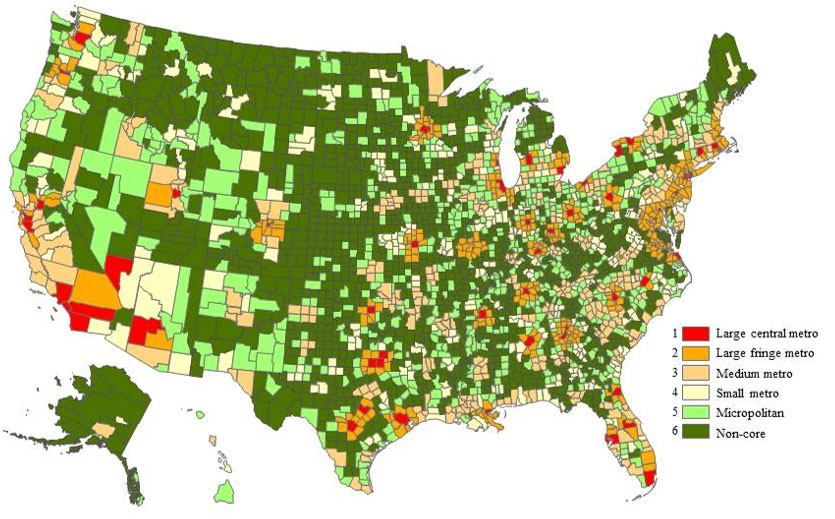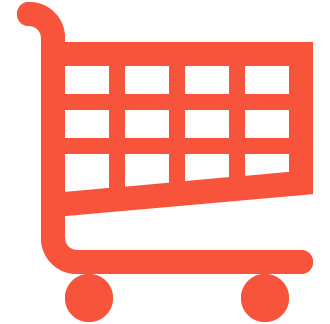Rural Social & Digital Research
Over 60 million people live in Rural America
Who are they and why are they an important audience for social and digital media marketing?

Demographic Overview
| Extreme Rural | Rural | Suburban | Urban | |
|---|---|---|---|---|
| Gender | 50.2% Female, 49.8% Male | 52.7% Female, 47.3% Male | 52% Female, 48% Male | 51.7% Female, 48.9% Male |
| Average Age | 57 Years Old | 50 Years Old | 44 Years Old | 46 Years Old |
| Average Income | $49,000 Per Year | $55,000 Per Year | $63,000 Per Year | $76,000 Per Year |
| Race | 81.5% White 11.8% African American 6.0% Other 0.7% Asian |
85.3% White 6.7% African American 6.0% Other 2.0% Asian |
74.3% White 11.4% African American 8.9% Other 5.4% Asian |
66.1% White 14.6% African American 10.8% Other 8.4% Asian |
| Ethnicity | 92.8% Non-Hispanic 7.2% Hispanic |
89.3% Non-Hispanic 10.7% Hispanic |
84.7% Non-Hispanic 14.3% Hispanic |
79.1% Non-Hispanic 20.9% Hispanic |
| Average Number of People in Household | Eight of more | One | Six | Seven |
RURAL AMERICANS DON’T HAVE ACCESS TO TECH & INTERNET LIKE THEIR URBAN COUNTERPARTS
But that doesn’t mean they don’t act the same online
Importance of Online Rural Shoppers
- Rural consumers are responsible for more than 10.8 billion internet-driven transactions annually, out of 69.9 billion - so this audience represents 15% of all internet-driven transactions.
- Estimated value of rural online transactions is nearly $1.4 trillion.
- 45% of rural residents go online weekly to make a purchase.
- 58% of Americans in rural areas have shopped on marketplaces, 71% at large retailer sites, 39% on web stores or independent boutiques, and 40% at category-specific online stores.
Rural American’s access to the internet is growing every year.
| Extreme Rural | Rural | Suburban | Urban | |
|---|---|---|---|---|
| Computer | 83 | 103 | 101 | 104 |
| Cell phone or tablet | 80 | 91 | 103 | 107 |
| TV | 50 | 85 | 106 | 117 |
Internet Usage at Home
Most of Rural county Internet consumption comes from a computer, cell phone, or tablet device. Because of this, social and digital media marketing play a huge role in connecting to these rural consumers.
Rural vs. Urban Internet Usage Levels
Rural consumers index higher than their urban counterparts, spending more than 6 hours a day on the Internet. They are also a near-match on medium to very light internet usage to urban consumers.
RURAL CONSUMERS ARE GROWING IN ONLINE PRESENCE AND INTERNET USAGE YEAR AFTER YEAR
What exactly are they doing online?
Social Media Influence for Rural Consumers
- 58% of rural residents use social media networks, falling behind urban residents at 64%.
- 51% of rural residents use social media.
- 30% of online shoppers say they would be likely to make a purchase from a social media network like Facebook, Pinterest, Instagram, Twitter, or Snapchat.
- 31% of shoppers said social media helped influence their buying decision.
- 25% of Rural Americans are more likely to buy something after seeing an ad on social media.

Usage of Online Platforms by Age
Social media is not just for millennials. The average age of 49-51 for Rural county consumers are very active on social media platforms, such as Facebook & YouTube.
| YouTube | Snapchat | ||||||
|---|---|---|---|---|---|---|---|
| Men | 62% | 75% | 16% | 30% | 23% | 25% | 23% |
| Women | 74% | 72% | 41% | 39% | 31% | 25% | 24% |
| Ages 18-29 | 81% | 91% | 34% | 64% | 68% | 29% | 40% |
| Ages 30-49 | 78% | 85% | 34% | 40% | 26% | 33% | 27% |
| Ages 50-64 | 65% | 68% | 26% | 21% | 10% | 24% | 19% |
| Ages 65+ | 41% | 40% | 16% | 10% | 3% | 9% | 8% |
| Rural | 58% | 59% | 28% | 25% | 18% | 13% | 17% |
Social Media Consumption
Rural county consumers stay relatively on par with urban county counties in terms of weekly social media consumption.
| Extreme Rural | Rural | Suburban | Urban | |
|---|---|---|---|---|
| 1-2 x per day | 23.7% | 25.4% | 24.4% | 23.9% |
| 3+ x per day | 47.9% | 39.7% | 46.4% | 48.2% |
| 4-6 x per week | 12.3% | 11.3% | 11.4% | 9.5% |
| 1-3 x per week | 8.6% | 13.0% | 9.9% | 11.8% |
| Less than once a week | 7.5% | 10.6% | 7.9% | 6.6% |
| Rural | Urban | |
|---|---|---|
| Product updates | 28% | 30% |
| Special promotions | 29% | 28% |
| Customer service | 15% | 9% |
| Brand news | 12% | 12% |
| Other | 15% | 21% |
Brand Engagement
Rural residents utilize social media to not only stay up-to-date with their friends, but also to stay engaged with their favorites businesses.
Social Media Statements
| Extreme Rural | Rural | Suburban | Urban | |
|---|---|---|---|---|
| I talk about things I see on social media in face-to-face conversations. | 84 | 92 | 106 | 104 |
| Social media is a way for me to tell people about companies & products that I like. | 84 | 88 | 98 | 111 |
| Sometimes I post ratings or reviews online for other consumers to read. | 74 | 80 | 112 | 107 |
| I like to follow my favorite brands or companies on social media. | 79 | 65 | 103 | 116 |
| I am more likely to purchase products I see advertised on social media. | 83 | 83 | 99 | 112 |
| I often click on links or items posted by others on social media . | 106 | 90 | 101 | 100 |
| I am more likely to purchase products I see used or recommended by friends on social media. | 88 | 84 | 98 | 111 |
| I trust product information that I get from social media more than other sources. | 112 | 68 | 102 | 105 |
SOCIAL MEDIA IS A GREAT WAY TO CONNECT WITH RURAL CONSUMERS AND GROW BRAND AWARENESS
Let’s review how a good paid search program will help to reach rural consumers
Paid Search for Product Discovery
- Rural shoppers are more inclined to go into a store for purchases, but they do their research online before going.
- Ensuring your brand is easily accessible through social media and paid search is key for brand discovery with rural shoppers.
Utilization of Paid Search
- Consumers are turning to websites as the first option to search for deals.
- 53% of consumers then use coupon websites (RetailMeNot, Coupons.com, etc.) for their online expenditures.
- 53% also use manufacturing and brand websites to obtain cheaper options instead of purchasing from large retailers.
RURAL CONSUMERS ARE PRICE-CONSCIOUS AND LOOK FOR SAVINGS IN BOTH DIGITAL & PRINT
Why is the affiliate channel key to influencing rural shoppers?
Impact of Affiliate Marketing on Consumers
- 86% of the shoppers surveyed said coupons have influenced them to try a new product.
- 84% of shoppers say coupons influence their store choices.
- 77% decide which stores to shop based on where they can use paper coupons.
- 75% of those surveyed print coupons from the internet and then take in-store to purchase.
- 71% of Americans’ purchasing behaviors are influenced by their ability to find a coupon or discount online.
- 67% decide which store to shop based on where they can use paperless discounts.

| Extreme Rural | Rural | Suburban | Urban | |
|---|---|---|---|---|
| Coupons.com | 49 | 102 | 136 | 92 |
| Groupon | 33 | 40 | 123 | 127 |
| Living Social | 6 | 33 | 140 | 127 |
Popular Coupon Sites Visited
- Extreme rural county consumers are less likely to use digital coupons because they still prefer traditional print options
- Rural county consumers continue using print coupons, but they are growing in terms of their use of online coupons.
- Rural county residents are more tech-savvy than extreme rural county residents
- Rural consumers are less likely to use coupon sites like Groupon or Living Social because those sites are targeted to large metro areas.
Top Affiliate Sites Used by all Consumers
- 64% of consumers use Coupons.com.
- Rural county consumers continue using print coupons, but they are growing in terms of their use of online coupons.
- 62% of consumers are aware of and use RetailMeNot.
-
The most used coupons from affiliate sites are:
- Groceries
- Restaurants
- Household goods
- Apparel
- Healthy & beauty
Popular Rural Retailers in the Affiliate Channel
- National chain grocery stores such as Safeway, Kroger, Publix and Wal-Mart, were some of the first stores to offer digital coupons.
- Dollar General then followed suit launching a partnership with Coupons.com.
- Ace Hardware also began online coupons for customers to have on their mobile device and even via text message.
- More than half of U.S. digital coupon users have found deals through emails from retailers, or through search engine websites like Google and Bing on their phones.

